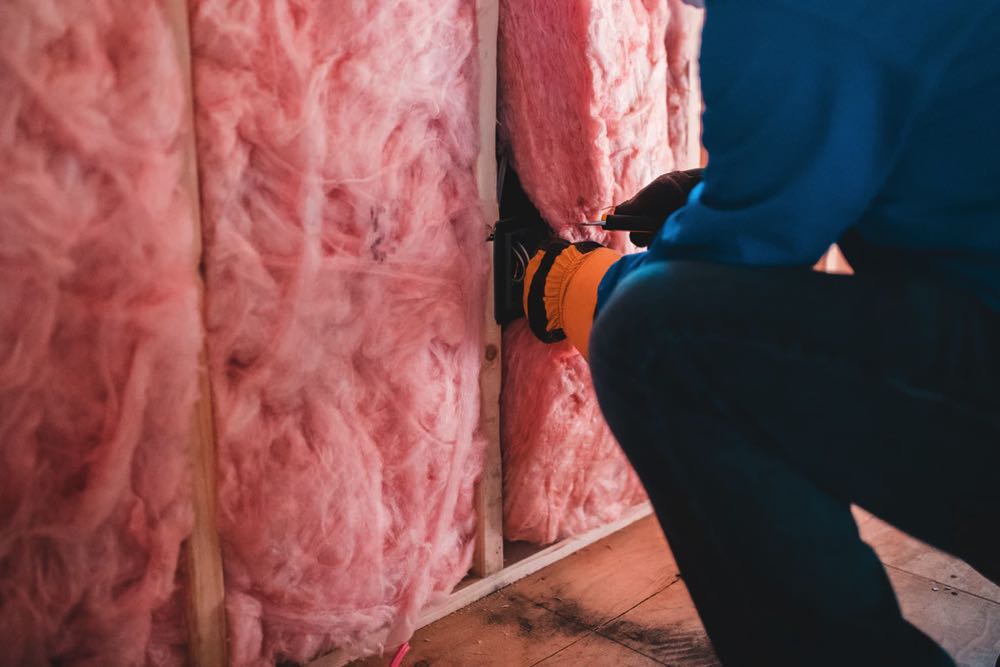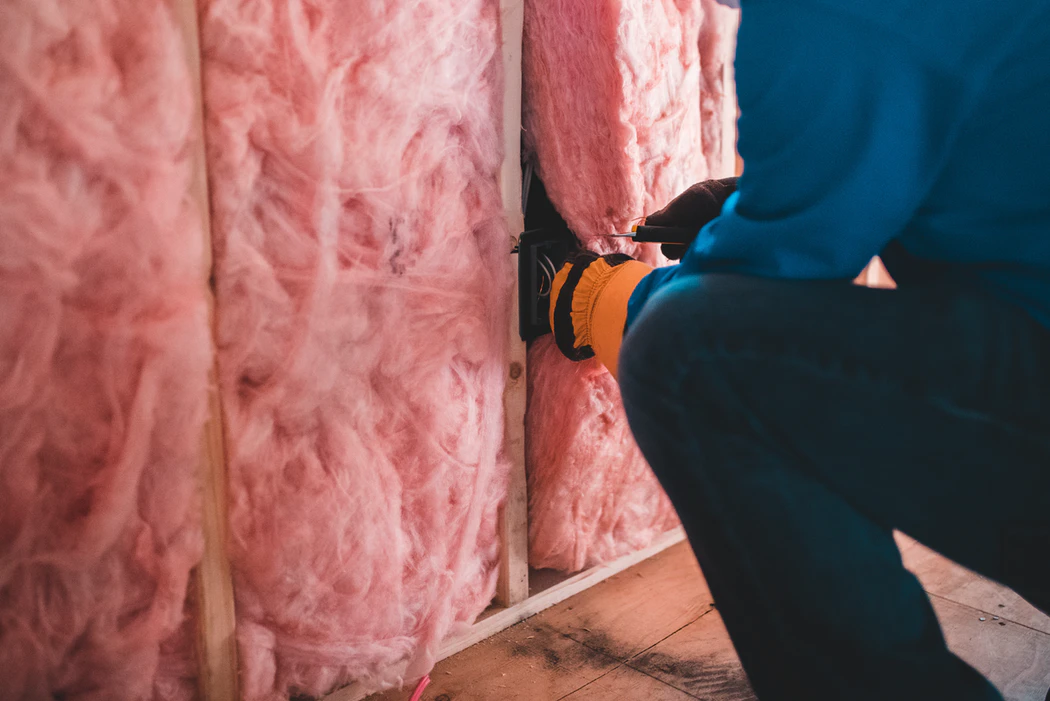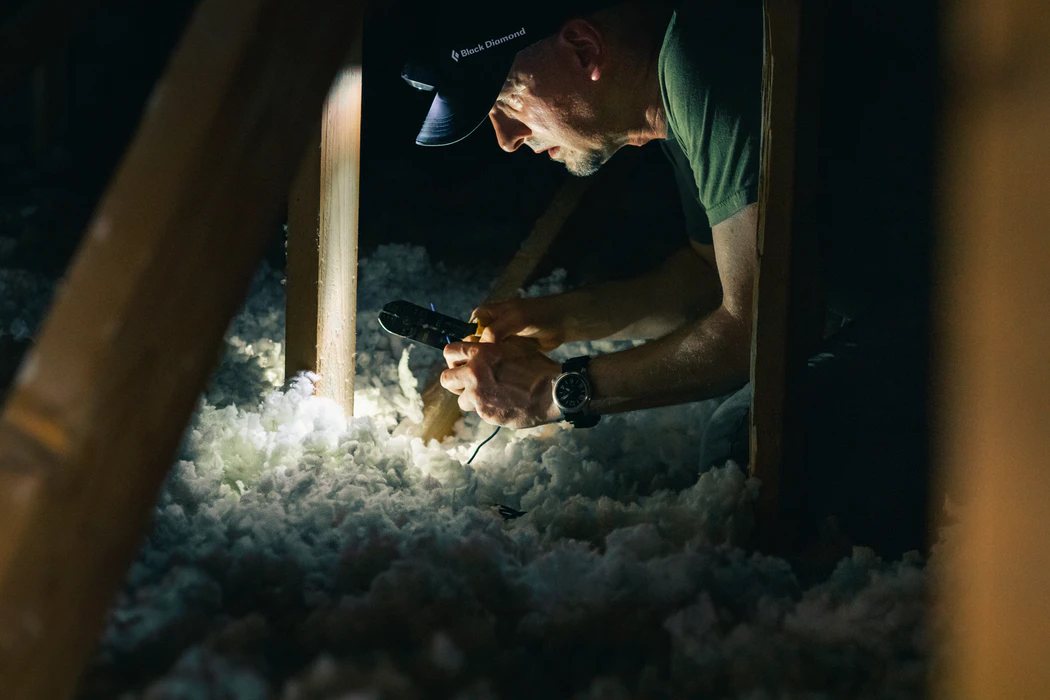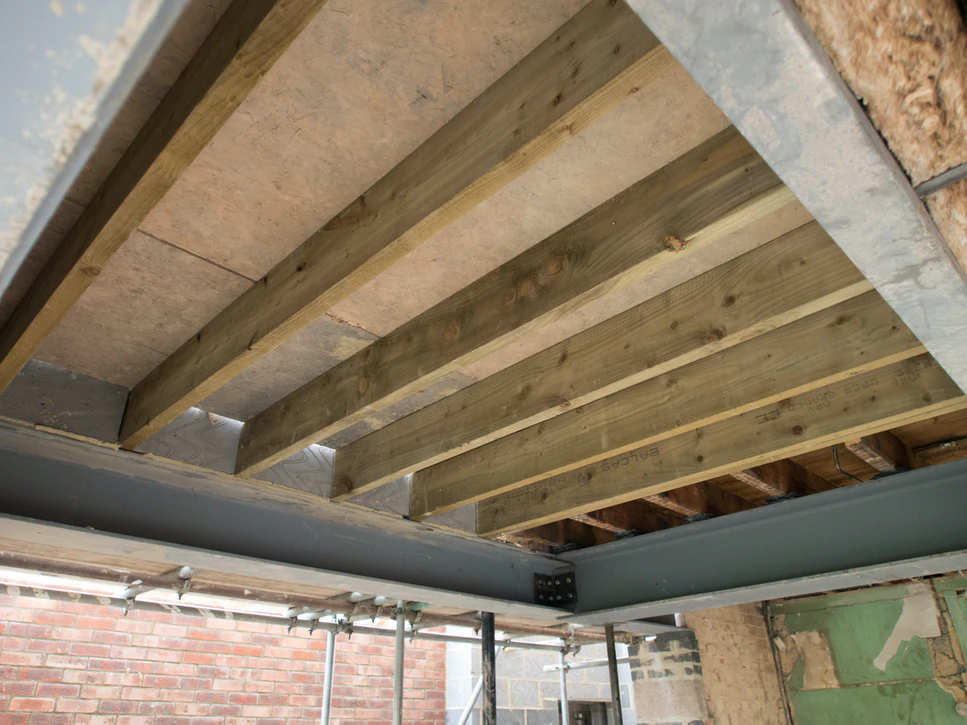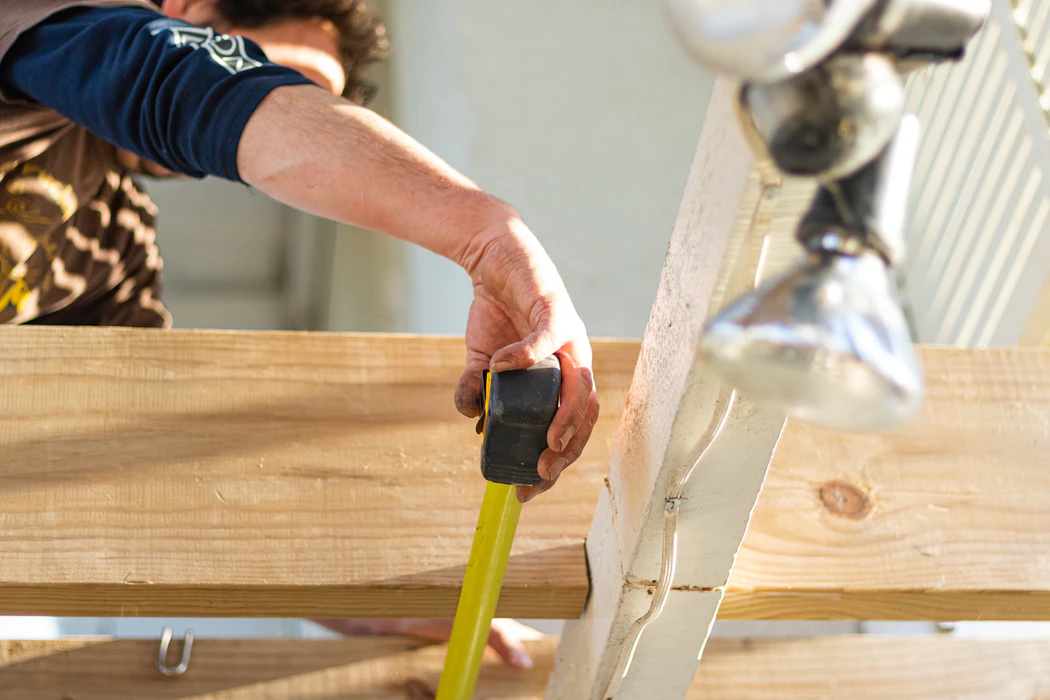Do you find that no matter what season it is, your rooms are never the perfect temperature?
Chances are, you’re reading this because you know insulation is vital in maintaining a comfortable home. At some point, every homeowner will face installing or replacing their insulation. Insulation can help fix dampness, reduce your bills, and block out noisy neighbors.
With so many options and factors to consider, we’ve put together this comprehensive guide to help you explore home insulation cost, materials, and what to expect during installation.
5 Benefits of Choosing the Correct Insulation
When you arrange to have insulation installed in your home, you might be wondering if the benefits are worth the initial cost. While there are pros and cons of every kind of insulation, here are the best benefits of choosing to insulate your house.
Reduce your energy bills
You’ve heard the suggestions that to bring your home energy bill down each year, you should switch your lights off when you leave the room, use energy-saving bulbs, and turn your heating system down.
But if you don’t have quality, efficient insulation, your energy bills could be going through the roof – literally. Insulation, particularly attic insulation, keeps your home at a more stable temperature. Choosing the correct insulation can save you a significant amount on your energy bill!
You might be wondering if the cost of insulation is worth the savings on your energy bills. Does it really pay off? Yes, it does! The EPA reports that average savings on the cost of heating and cooling your home are around 15% when you insulate. In the long run, the initial cost of insulation will soon pay for itself.
Your Home Maintains a Comfortable Temperature, Year-Round
Insulation works by limiting the heat transfer coming into or out of your home. Each kind of insulation has an R-value, which is a measure of how heat resistant your insulation is.
Once you have your home insulated, heat travels at a much slower rate. In real terms, that’s your heating staying in your house during winter, and the summer sun stays out. It puts less pressure on your heating and cooling systems and reduces your energy bills. Win-win!
Insulation Reduces Sound
As well as controlling the temperature in your home, some types of insulation materials double as soundproofing. Whether you live in a noisy neighborhood, or you’re blocking noise between rooms, insulation may help trap the sound waves and absorb vibrations.
Materials that reflect heat won’t be any good for soundproofing. You need something dense like fiberglass or cellulose to reduce noise. As a bonus, you can install both into floors, walls, and ceilings for maximum effect.
Reduce Moisture and Mold
Condensation can pose big threats to your home. Failing to have proper airflow and ventilation can cause mold to grow, which in turn could cause structural damage and health problems. Insulation prevents air leaks when installed correctly, which can further stop condensation in its tracks.
Thankfully, some mold-resistant insulation can prevent this from becoming a problem, as part of a moisture control strategy. Humidity-controlling materials such as spray foam insulation can prevent moisture from entering your home, raising the wall temperature to stop condensation from forming.
Better For The Environment
Many homeowners are becoming increasingly conscious of the environment. Insulation can play a significant part in creating a greener home.
It’s not just about reducing your energy usage. To select the right insulation for your home, consider:
- The materials used to create your insulation – does yours use waste or recycled products?
- Is your insulation responsibly sourced?
- How does it affect pollution?
You might be surprised at how eco-friendly insulation can be. For example, according to the Insulation Institute, correctly installed fiberglass or mineral wool can save more than 100 times the energy that manufacturing those products takes.
Types of Insulation
With so many worthwhile benefits to having insulation installed in your home, it’s a tough call to know which type of insulation to go for. You’ll need to factor in the budget, the construction of your house, where you want to add insulation, and any present issues like dampness or cracks.
Here’s an overview of the popular and readily available types of insulation.
Fiberglass
Crafted from spun, molten glass, fiberglass is one of the most commonly used insulation materials. It’s relatively inexpensive and comes in a blanket and loose fiber formats, depending on the application you need.
The blanket kind is often referred to as ‘batt’ and looks like a thick sheet or roll (like a blanket). You might be familiar with batt if you’ve ever seen or installed insulation in an attic, as it’s perfect for covering unobstructed areas.
Blown-in fiberglass is more often used in spaces where there are obstructions – think the cavities in your walls, or covered floor spaces.
To install it, you need specialist equipment to blow the fibers into place, so it’s best to work with a professional.
As it’s heat resistant, fiberglass is also used as duct insulation, ideal if you’re insulating around pipework.
The only downside you need to bear in mind is that fiberglass may trap unwanted moisture, for example, from a roof leak or condensation. Moisture can lead to mold and decrease the effectiveness of the insulation, so be wary!
Cellulose
Cellulose is a practical, inexpensive solution to fill the walls and attic floor of your existing home. It comes in loose fibers made from recycled paper and wood products. It’s treated with borates to make it fire retardant and insect resistant, then blown in.
Other types of insulation may require you to rip down drywall to access cavities. To lay fiberglass batts, for example, you’d need access to the entire inner wall space. With blown-in cellulose, your specialist only needs to make a few holes which then get plugged up and covered over.
Cellulose fibers, over time, can settle, creating pockets of air which can render your insulation less effective. If the insulation gets moisture damage, this can also decrease its R-value.
Cost-wise, cellulose is around the same price as blown-in fiberglass, making it an affordable choice to insulate your home.
Mineral wool
There are two kinds of mineral wool used in insulation; rock wool and slag wool.
Rock wool is a man-made product manufactured from natural minerals. Slag wool uses runoff waste products from molten metals.
The three biggest advantages of mineral wool are:
- It’s naturally fire-retardant so there’s no need for any further chemical processing to make it safe to use
- Both kinds use around 75% recycled materials from the industrial manufacturing process
- It’s water-resistant, which can inhibit mold growth and excess condensation
Like with fiberglass, mineral wool comes in batt or loose-fill form. The main drawback with mineral wool is the cost, coming in around a third more expensive than fiberglass.
Foamboard
Regarded as a cheap and easy way to insulate your home, foam board is readily available and comes in three main types.
Expanded polystyrene (EPS) is the most inexpensive kind of foam board. It’s crafted from tiny beads of polystyrene which are then fused together and molded into shape.
You can use it in your attic, in walls, and under floors. It’s easy to cut using a blade or saw, and comes in sheets you can cut to size.
Extruded polystyrene (XPS) is denser than EPS, as the molten material is directly molded into sheets instead of beads fused together. As a result, it’s more insulating, but it is more expensive.
Polyisocyanurate (polyiso) is the densest foam board, sometimes covered with a reflective material to reflect radiant heat. It’s the priciest of the options but the most effective.
With all foam board options, the biggest risk is that they act as a barrier to moisture. Great for areas that may be prone to getting wet, like foundations or basements! But take care when installing in somewhere like an attic that could build up condensation and risk mold growth.
Closed-cell foam board, like polyiso or XPS, can lose some of its insulating properties over time as the gas inside can escape.
Foam board is perfect if you’re insulating open areas. If you want to use it inside existing walls for example, like batts, you’d need to pull down drywall and replace it.
Spray-in foam
Available in open and closed cells formats, spray-in foam is a great choice for attics, walls, and floors. You need less spray-in foam to create the same insulating properties as alternatives like fiberglass. Ideal for attics where you may want to lay down boards to use the space for storage.
Closed-cell foam is rigid once it sets, which makes it more effective than open-cell foam. But, it works as a barrier to moisture, so you must create enough ventilation to stop condensation from building up.
Open-cell foam is flexible and less dense than closed-cell foam. It’s less insulating as a result but works very well as soundproofing. If moisture is a concern, opt for open-cell foam as it lets more moisture through so you can avoid the build-up of condensation.
Spray-in foam is usually much more expensive than its counterparts, so it’s worth weighing up the pros and cons to decide if it’s worth the extra cost.
Installation releases a lot of harmful fumes which could stick around for a while once the installation is complete. If it’s likely that you have to remove insulation in the future, bear in mind that spray-in foam is tricky to take out.
Natural materials
If you’d rather go down a natural route, there are some options for using natural materials for your home insulation.
Straw, made popular over 100 years ago, is still one of the most effective insulating materials – and it’s renewable with a low environmental footprint.
With a high R-value comparable to fiberglass, you can use straw panels, made from compressed straw, in your attic, walls, and under the floor. It’s best to avoid using it in foundations, however, because it can rot.
Before opting for straw, check that your local building code will allow you to use it, as some regions won’t permit it.
Cotton is another natural material often used to insulate homes, and although it’s not the cheapest option it does use mostly recycled material. It’s a great choice if you’re concerned about the environment, as it uses fabric offcuts and clothing that would otherwise end up in landfills.
To make it safe to use, cotton insulation is treated with borates to make it fire retardant. it’s available in batts, just like fiberglass, and offers a similar amount of insulation.
Sheep’s wool is an expensive insulating product, but acts as an effective humidity buffer, reducing the chance of condensation buildup. It’s naturally fire-resistant, too, making it a safe option for your home.
However, is it worth the price tag? It’s not the best insulator available when you consider there are cheaper, more effective alternatives like spray-in foam.
How To Choose The Right Kind of Insulation
There are a lot of materials to consider, with their individual benefits and drawbacks. What can help you narrow down your choice of home insulation is thinking about where you might want to install it.
Depending on how your home is built will change what options are right for you. Here’s a rundown of the different areas you can insulate and what to expect.
Attic
Your attic is a great place to start when insulating your home. With energy prices rising, a properly insulated attic can save you a lot of money each year.
If your attic has an uncovered floor showing the bare joists, then blown-in or batts are a great choice, particularly if there’s no existing insulation installed. Blanket insulation often comes in standard widths which fit neatly between the joists without much customization. If there are obstructions, blow-in fibers like cellulose are a wiser choice since they’ll form a tight seal around irregular angles.
If you want to cover up your insulation so you can make use of your attic space, spray-in foam can offer a high level of insulation without taking up much room, leaving plenty of space for boards.
Depending on where you live will determine the R-value you’ll need for your insulation to make a difference. Some of the most popular choices are fiberglass and rock wool batts, and cellulose loose fibers.
Crawl spaces
Crawl spaces are often close to the ground so they’re prone to moisture, mold, and pests. In choosing your insulation, it’s important to keep this in mind so your installation is effective and won’t get damaged.
Spray-in foam is a sensible choice for insulating crawl spaces as it’s easy to fill tight areas. Plus, it’s fairly water-resistant.
To further prevent condensation, allow air to flow from the living area to the crawl space. Check drains and guttering on the exterior of your home for damage.
Floors
Selecting the right insulation for your floor will heavily depend on your floor’s construction. There are typically two kinds – suspended or solid flooring.
Drafty and cold, if your home has floorboards then you have suspended flooring. The boards are nailed to joists with a large gap underneath that you’ll need to take care to insulate correctly.
It’s better to avoid pulling up floorboards and insulating from the top – rather, get into the space below and apply insulation from the bottom. Applying draft strips then using cellulose fibers held in place by a membrane works well.
Solid flooring is a little trickier to insulate as it’s often built directly on top of the ground below with no gap. For this reason, they’re prone to moisture and there aren’t many options to help other than completely rebuilding your floor.
Try laying carpet on top of a solid floor, opting for a breathable backing, and avoiding rubber-backed carpet.
Interior walls
Open walls are much simpler to insulate than finished or closed walls. You’ll need to choose the best insulation for your home and the current state of your interior walls.
For open walls, fitting batts can be the easiest solution. Batts come in a range of materials, usually in sheets or rolls. You’ll need to measure them accurately. Leaving gaps around the batt, or compressing the batt too much, will result in unwanted air pockets, reducing the effectiveness of all your hard work!
Closed walls are a little trickier to fill with insulating materials because you don’t have easy access to the space behind the drywall. Your options are to either rip down the drywall and replace it or fill the wall cavities with a blown-in fiber or spray-in foam.
As a side note about interior walls, some homes constructed from brick or stone are generally of ‘solid’ construction – meaning they don’t have a cavity. These types of walls let out much more heat than cavity walls!
To insulate solid walls, you can build a stud wall over the top of the interior solid wall, filled with your insulation of choice.
Exterior walls
To insulate your home from the outside, you can choose to have insulating panels fixed to your exterior walls. These are expensive but come in a range of attractive finishes to spruce up the look of your home and add value.
A professional will help determine what kind of insulation you’ll need, but often you can choose familiar materials such as fiberglass or cellulose. Treating the outside offers a continuous level of insulation throughout your home, minimizing mold and condensation.
Preparing your home for insulation
Before any work takes place, prep your home to make installation quick, easy, and safe. A professional will help you with any specific or complicated issues.
Fill in air leaks
Air leaks are insulation’s worst nightmare! These occur around windows, doors, pipework, and electrical cables. Escaping air reduces the effectiveness of your insulation, so seal any gaps and holes with sealant foam or weatherstrips.
Move obstructions
Whether you’re installing insulation yourself or depending on a reliable contractor, you’ll need to clear the surrounding area.
That means vacuuming floors, clearing boxes and bags from your attic, moving furniture away from walls, and unplugging appliances.
Installation is quicker and safer in an unobstructed area.
Check for water leaks
Mold and condensation are terrible for insulation, so identify any water leaks or damp areas in your home before you begin the installation. Water leaks can appear from broken brick or tile, broken guttering, burst pipes, rising damp, and flood damage.
A couple of minor spills may be easy to treat yourself, but it’s best to contact a professional to carry out proper checks to make sure it’s safe to go ahead.
Box off light fixtures
Fire risks are no joke – and installing insulation around light fixtures can create fire hazards without proper care.
Before installation begins, box off all light fixtures in your attic that could come into contact with the insulating materials. It doesn’t have to be complex – a basic plywood box would work well.
Working with an insulation professional
As you can see, correctly installing insulation isn’t as easy as running down to the hardware store to pick up a couple of rolls of fiberglass!
To make sure your home is properly protected from the elements while avoiding condensation, mold, and fire hazards, your best option is to consult a professional.
An experienced tradesperson has seen all kinds of insulation scenarios in their career, which helps them identify issues in your home and give you the correct advice.
Contact a professional in your area today to make your home as energy-saving, quiet, and comfortable as can be.

